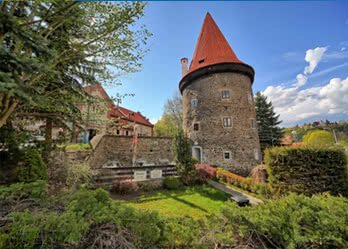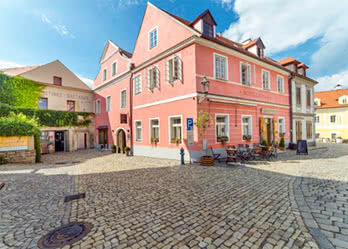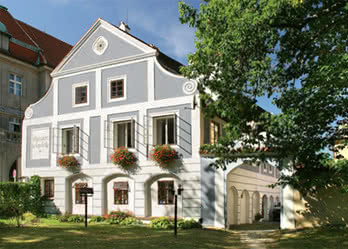 Český Krumlove Travel Guide
Český Krumlove Travel Guide Inner Town
Inner Town District Museum (former Jesuit Seminary) - Horní No. 152
District Museum (former Jesuit Seminary) - Horní No. 152
District Museum (former Jesuit Seminary) - Horní No. 152
The building was constructed in the early Baroque style on the site of six medieval houses in the years 1650 - 1652 to serve for the purposes of the Jesuit Seminary. It was remodelled around 1750. After the Jesuit Order was abolished in 1773 the building continued serving for school purposes, and after 1950 museum collections documenting the development of the district from prehistory to the 20th century, were deposited there.

The Museum has, among other things, a rich collection of Gothic sculpture, including e.g. St. Catherine and St. Margaret from the 1380’s (pictures 1, 2), St. Anne with the Virgin Mary and Jesus from after 1520 (picture 3), a majestic statue of St. Wolfgang from 1450 - 60 (picture 4), St. Peter and Paul about 1520 (pictures 5, 6), the Pieta from the 1st quarter of the 15th century.
The Museum collections also include a completely preserved Baroque pharmacy, originally kept in the Jesuit College in Český Krumlov. The equipment of the pharmacy, which was made in the course of the 17th and 18th centuries, consists of lavishly engraved shelves with paintings of St. John of Nepomuk and St. Panteleon, a statue of the Virgin Mary and a collection of 200 vessels and apothecary’s tools.
Very impressive is the ethnographic exhibition with folk furniture, work tools and folk art from the second half of the 19th century. Examples of this exhibition, as shown on page 25, consist of paintings on glass, a cabbage slicer, a butter-tub, wooden buckets, a wooden bowl from the second half of the 19th - early 20th century, and a painted chest and wardrobe from the 19th century.
Official website: http://www.museum-krumlov.eu/en_index.html








